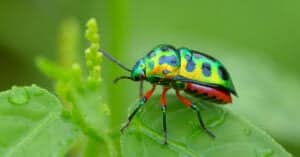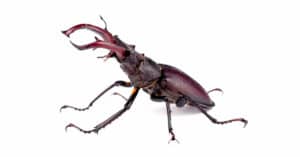Scientists have identified over 350,000 species of beetles. These insects take on many forms, and they come in all kinds of shapes and sizes. Some of them are less than a tenth of an inch long while other beetles are over 3 inches! How can you tell if the flying bug in your home is a beetle, though? Take a look at how to identify flying beetles in your home and tips on how to stop them from coming into your home.
How to Discern Whether an Insect Is a Flying Beetle
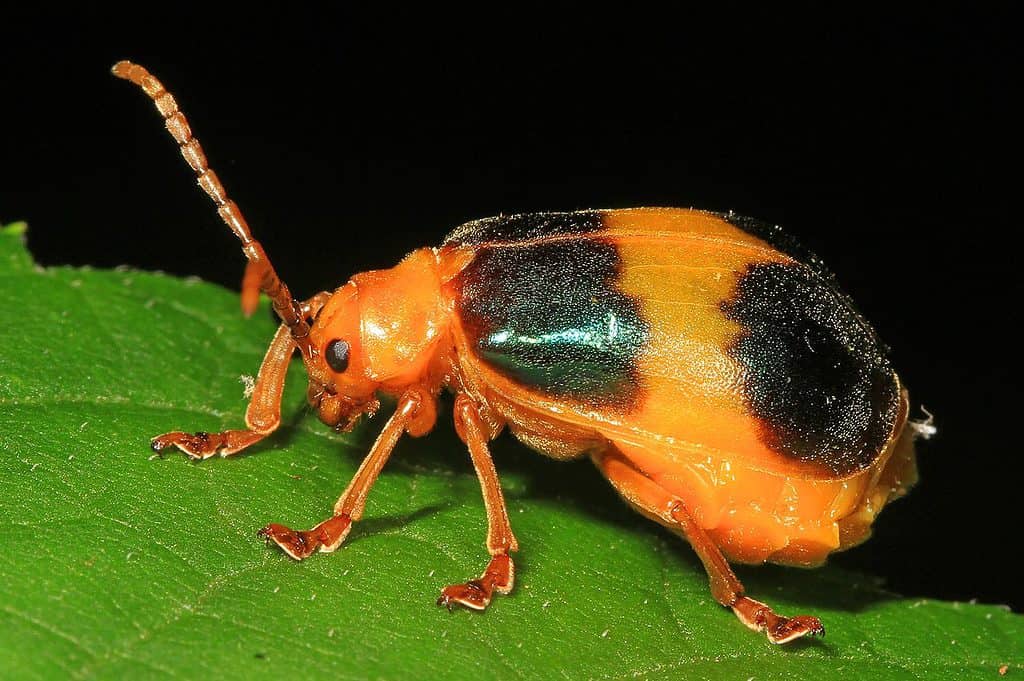
Three factors can be used to determine if an insect is a flying beetle.
©Judy Gallagher / CC BY 2.0, via Wikimedia Commons – License
Generally, you can tell if a flying insect is a beetle by looking at the creature’s number of legs, the presence of elytra, and the mouthparts.
Whether driven by simple curiosity or the fear of an infestation, people want to know exactly what insect flies into their home the moment it appears. Yet, there are millions of types of insects, and a substantial portion of them are flying insects.
Figuring out whether a flying bug is a beetle requires knowing what separates them from other insects. Consider several factors that can help a person determine whether the critter buzzing around their home belongs to Coleoptera.
Given the vast diversity in beetles, though, some of these factors may be harder to spot or easier to misidentify.
Count the Legs
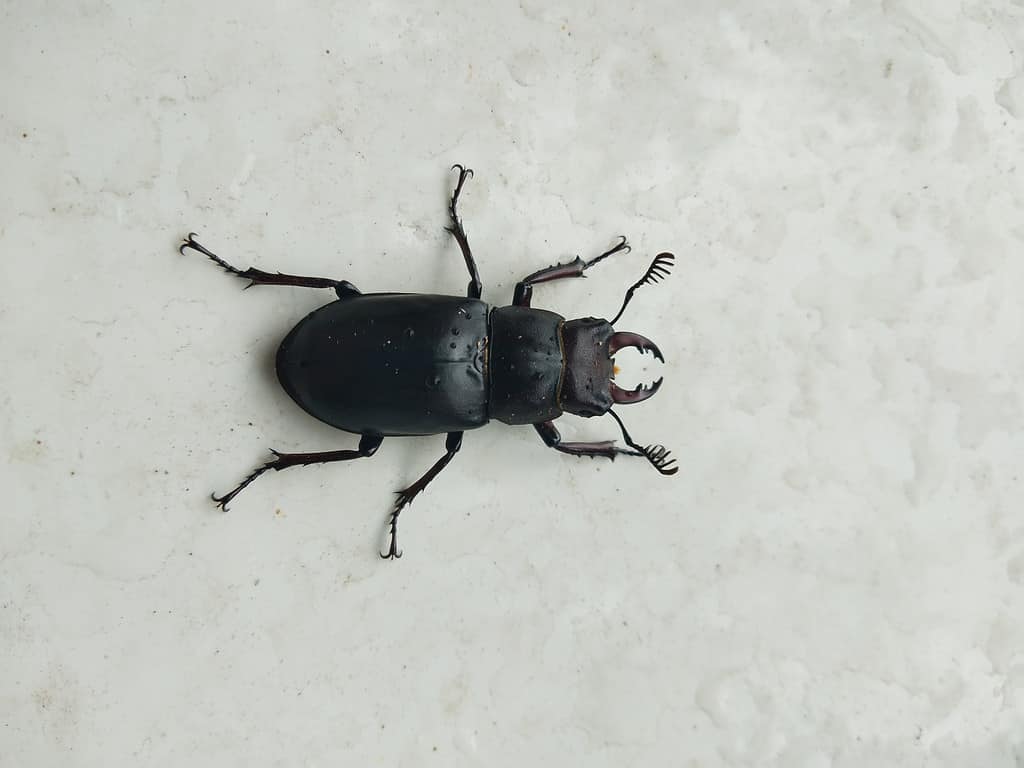
Every beetle has three legs on each side of its body.
©Studio Caramel/Shutterstock.com
The first thing that you can do to identify whether you’re looking at a flying beetle or a flying bug is to count their legs. Beetles only have six legs. Their legs are distributed throughout their body, three on each side. If the bug has more legs or fewer legs, then they’re not a flying beetle.
However, leg count is not the only thing to look at. After all, true insects all have six legs and two antennae. Also, their bodies are divided into the head, thorax, and abdomen.
Speaking of antennae, it’s easy to mistake beetles’ antennae for additional appendages. That’s especially true of long-horned beetles. Yet, if you can look closely at the critter, you’ll see that they stem from the head area rather than the side or underside.
Find the Insect’s Wings and Look for Elytra
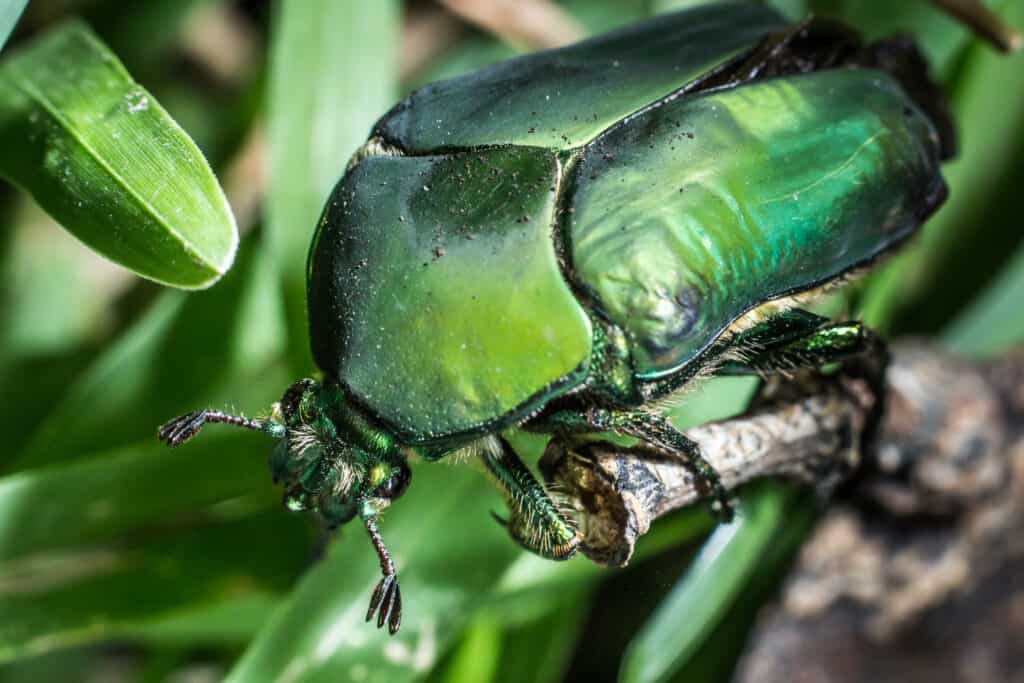
The well-defined elytra on this beetle hide the membranous wings it uses to fly.
©Auribe/Shutterstock.com
Another helpful step in identifying a flying beetle is to look at its wings. Beetles are unlike many other flying insects because they do not have their wings out all the time. Instead, the wings beetles use to take flight are hidden beneath a hardened forewing called an elytron.
The elytra are such a unique, identifiable factor of beetles that they are named after them. Beetles belong to the order Coleoptera. The word Coleoptera roughly translates to “sheath-winged.” Beetles have elytra, and other insects do not.
This hard outer covering protects their wings when they’re not in use. Looking at a flying beetle from above, the elytra will appear to have a split down the middle, seemingly dividing their abdomen. When they are ready to take flight, the beetles will lift these structures, so their membranous flying wings can carry them.
Not all beetles have complete elytra. Sometimes, they do not grow to cover the entirety of the wings used to fly. Still, the presence of elytra is a very good indicator that an insect is a beetle from Coleoptera.
Flies do not have an elytron, and neither do bees. The wings they use to fly are always out in the open. As a result, checking for the elytron may be the simplest way to figure out if a flying insect is a flying beetle.
Look at the Insect’s Mouthparts
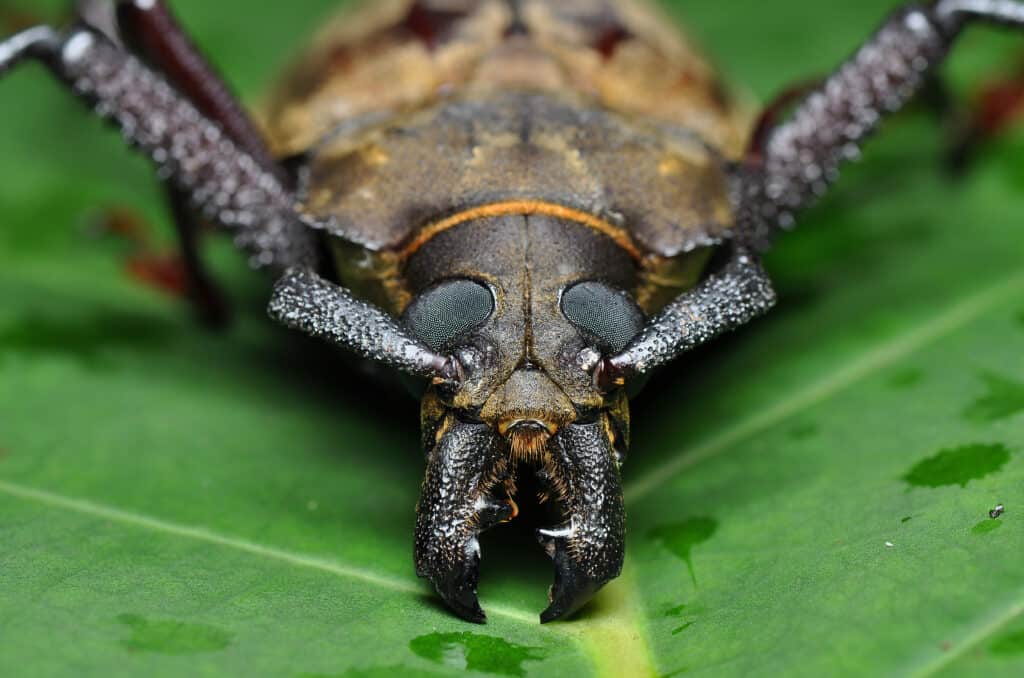
Beetles have chewing mouthparts rather than piercing-sucking mouthparts.
©SIMON SHIM/Shutterstock.com
Lastly, looking for chewing mouthparts is a very helpful way of determining if an insect is a beetle. Beetles have chewing mouthparts, but other insects have a variety of different mouthparts. For example, mosquitos have piercing-sucking mouthparts and bees have a combination of sucking and chewing mouthparts.
A beetle’s chewing mouthparts are always not the same as its mandibles. A male stag beetle does not use its huge mandibles to bite and chew its food. Instead, the structures are used for protection and competing for mating rights.
Also, it’s necessary to realize that some beetles can have what appear to be piercing-sucking mouthparts. For example, weevils are known for having a long, thin snouts. That snout is not used in the same way that a mosquito uses its mouth to pierce and suck blood from other creatures.
Instead, the long snout has mandibles on the end of it. Given a weevil’s size, it may be hard for people to get a good enough look to check for its mouthparts, but they are there.
Using these three methods, you can get a pretty good idea of whether the insect you’re looking at is a beetle or not. Identifying the specific beetle from that point on is a matter of looking at the creature’s morphology, color, size, and other factors.
How to Prevent Flying Beetles in Your Home

A good screen can prevent many types of flying insects from gaining access to your home.
©iStock.com/dit:nickalbi
Few people want flying beetles in their homes. They can ruin food, leave behind a bad smell, and continue to breed indoors. Fortunately, several methods exist to cut down on the chances of an infestation. Follow these tips to reduce the likelihood of flying beetles coming into your home.
- Trim the trees and shrubs near the side of your house to prevent beetles from gaining easy entry.
- Mend broken screens in windows and doors.
- Fill holes and gaps near windows and doors using caulk.
- Seal holes near dryer vents on the outside of your home.
- Put in new weather stripping around windows, doors, and air conditioners, and add door sweeps.
- Clean up any spilled food or liquids that could attract beetles to the home.
- Use sticky traps to bait and catch beetles that are already around your home.
- Use motion-sensing lights rather than keeping lights on outdoors all night.
These tips will help you take some basic steps to prevent flying beetles from entering your home.
Knowing how to identify a flying beetle can be very helpful in starting pest control measures. Understanding how and why the insects got into your home can provide an outline for how to keep them out in the future. When in doubt, though, it’s best to consult a professional to help manage insect pests.
The photo featured at the top of this post is © Steven Ellingson/Shutterstock.com
Thank you for reading! Have some feedback for us? Contact the AZ Animals editorial team.



